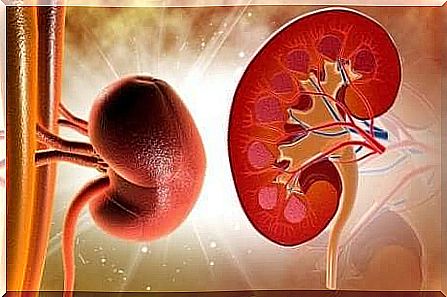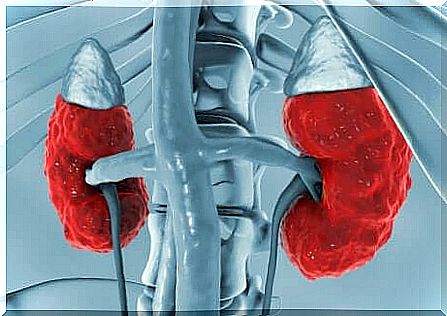Interesting Facts About Hyperchloremic Kidney Acidosis
Acidosis occurs when the pH of the kidneys and the lungs are out of balance because too much acid builds up in the body. Hyperchloremic acidosis results from a loss of sodium bicarbonate. Find out more about this metabolic disorder today.

A hyperchloraemic kidney acidosis occurs when there is an excessive loss of sodium bicarbonate. The kidneys are unable to remove the excess acid from the organism.
This disease is caused by a disruption of the reabsorption of sodium bicarbonate in the proximal tubule (main part of the renal tubule). This leads to metabolic hyperchloremic renal acidosis.
The prevalence (ie the incidence of the disease) is not known. However, drug-induced tubular renal acidosis is relatively common. However, the genetic, isolated hyperchloremic renal acidosis occurs very rarely.
Hyperchloremic renal acidosis: symptoms

The symptoms of this type of kidney acidosis depend on the underlying disease. Typical signs are fast, heavy breathing, letargy, and confusion. Shock can also occur. There is then a risk of death!
Over-acidification is usually associated with low urine. In addition, there is a delay in growth and a reduction in bone mineral density. In some cases, hypokalaemia can also be the result, more rarely it can also lead to temporary paralysis. However, rickets and osteomalacia are due to a vitamin D deficiency and the lack of absorption of phosphate.
Hyperchloremic renal acidosis: causes
It is a metabolic disease that can have various causes. Renal hypercholemic acidosis is one of the main types of metabolic acidosis.
This can occur, for example, through intoxication with acetylsalicylic acid, ethylene glycol or methanol. Acidosis can also develop in the event of severe dehydration (e.g. diarrhea or the use of dehydrators).
Hyperchloremic renal acidosis can be acquired or caused by recessive (in most cases) or dominant inheritance. In this case, the disease is based on a defect in the SLC4A4 (4q13.3) gene. The dominant acidosis gene has not yet been identified.
The proximal tubule reabsorbs approximately 80% of the filtered sodium bicarbonate, but if it is defective, this sodium salt will be lost.
Some drugs can also cause hypercholemic renal acidosis.
Hyperchloremic renal acidosis: diagnosis

Early diagnosis is very important to facilitate recovery. It must be demonstrated that the reabsorption of sodium bicarbonate in the proximal tubule is disturbed. The diagnosis is confirmed with a series of blood tests. Acidosis has abnormally high pH and sodium bicarbonate levels in the urine.
Other hereditary diseases that affect the proximal tubule must be ruled out. These include, for example, the oculo-cerebro-renal syndrome (OCRL), also known as Lowe syndrome, Dent syndrome and glycogen storage disease due to Glut2 deficiency.
An arterial blood gas makes it possible to examine the levels of oxygen and carbon dioxide in the blood. This also shows the pH value.
A basic metabolic panel may also be required. A blood analysis provides information about the sodium and potassium content, kidney function and other chemical substances. At the same time, the pH of the urine, the ketone bodies in the blood and urine and the lactic acid levels are determined.
Various tests and exams can also confirm whether it is respiratory acidosis or metabolic acidosis.
Renal hyperchloremic acidosis: treatment

Treatment for hyperchloremic renal acidosis depends on the causes. If it is inherited proximal renal acidosis, then sodium bicarbonate is required for life. This allows the pH value to be normalized again.
In some cases, diuretics from the thiazide family (25-50 mg daily), such as hydrochlorothiazide, are used. This is intended to improve the reabsorption of sodium bicarbonate and to reduce the administration of this substance.
Serum potassium must also be monitored, so in some cases a mixture of sodium bicarbonate and potassium is given.
Drug-induced hyperchloremic renal acidosis is usually reversible when drugs are stopped. With the right treatment, the prognosis for this disease is good.









